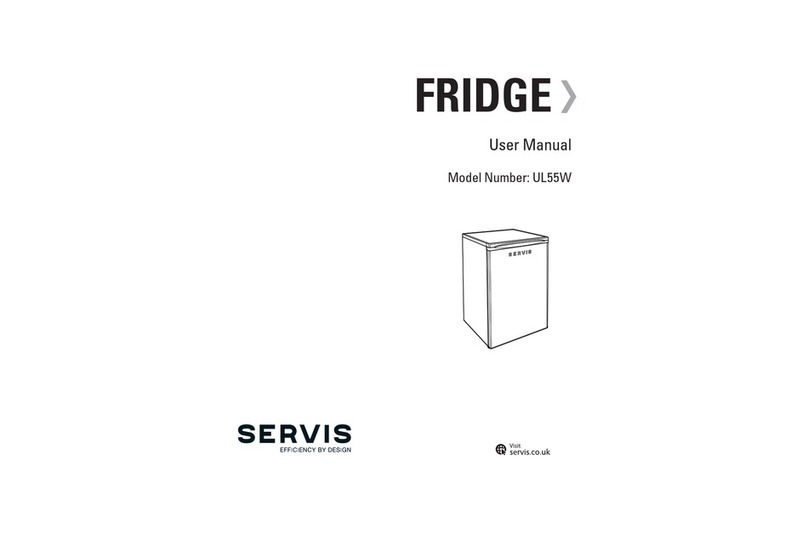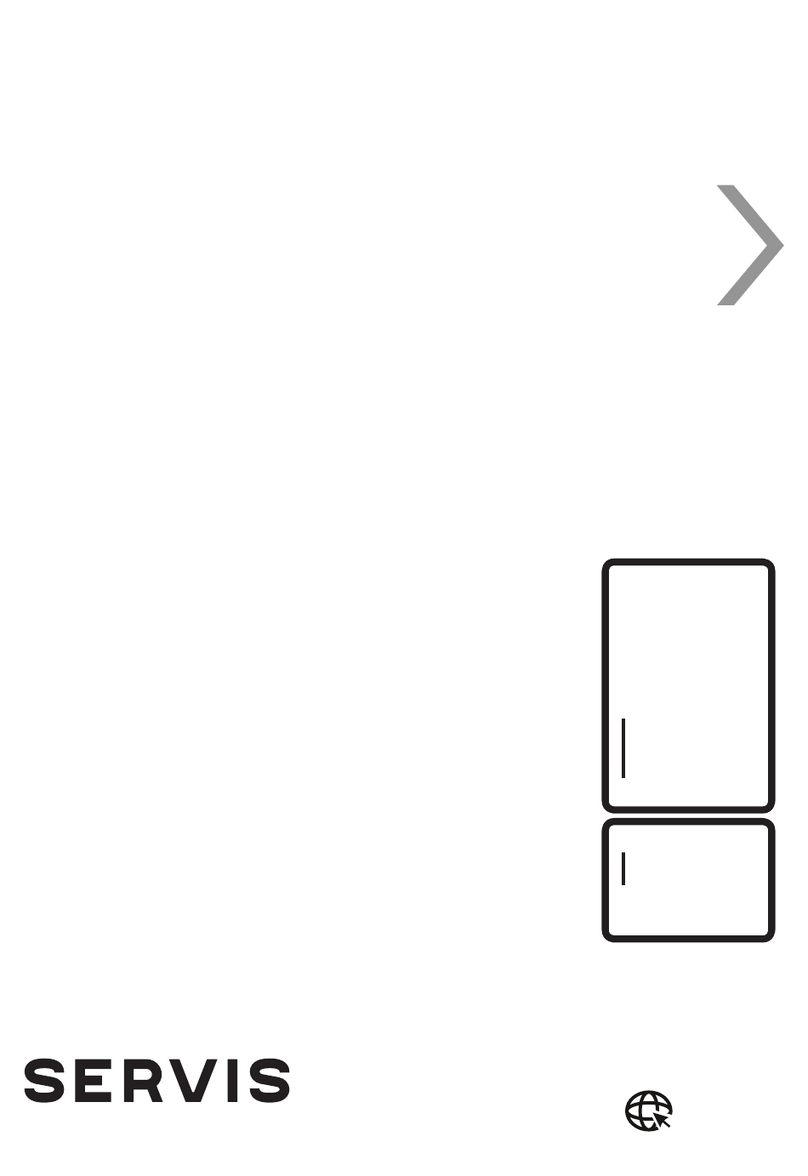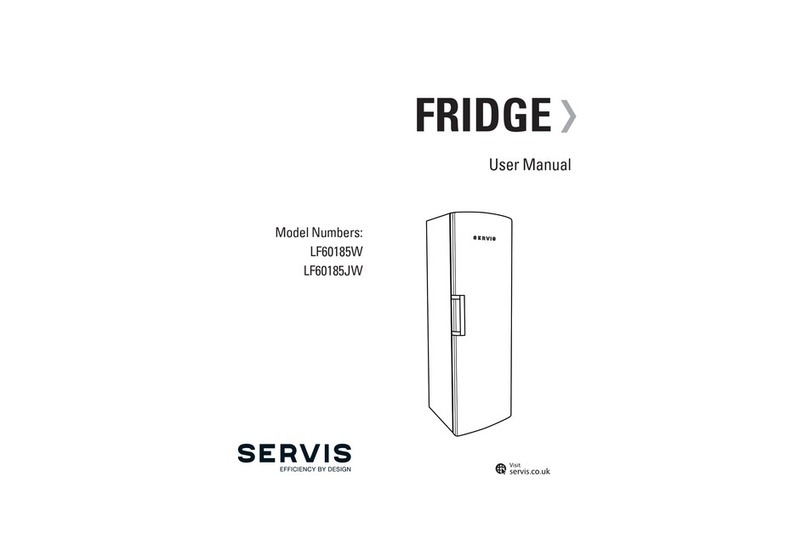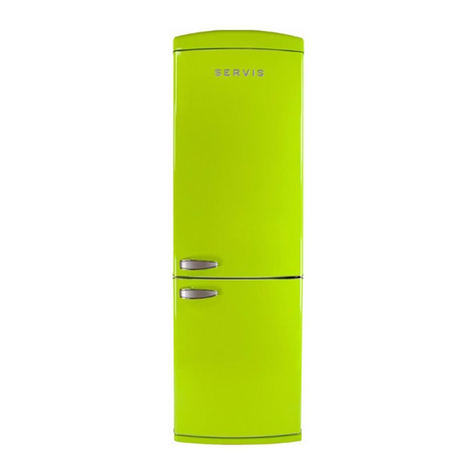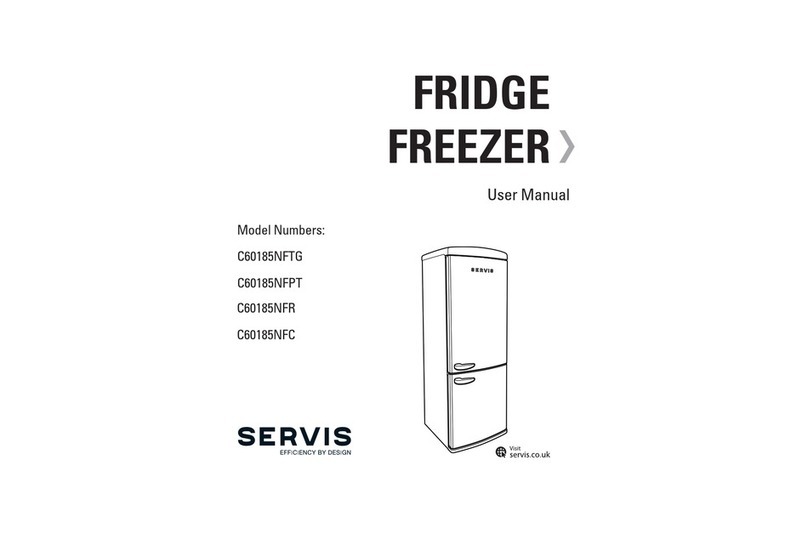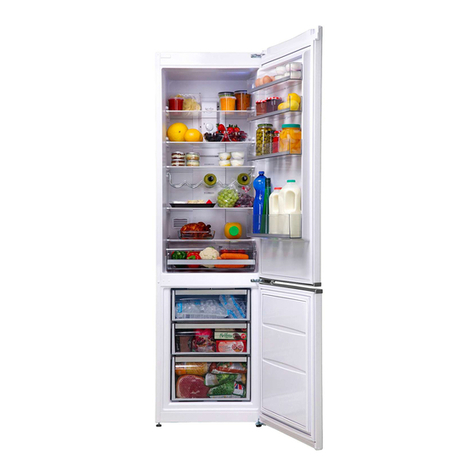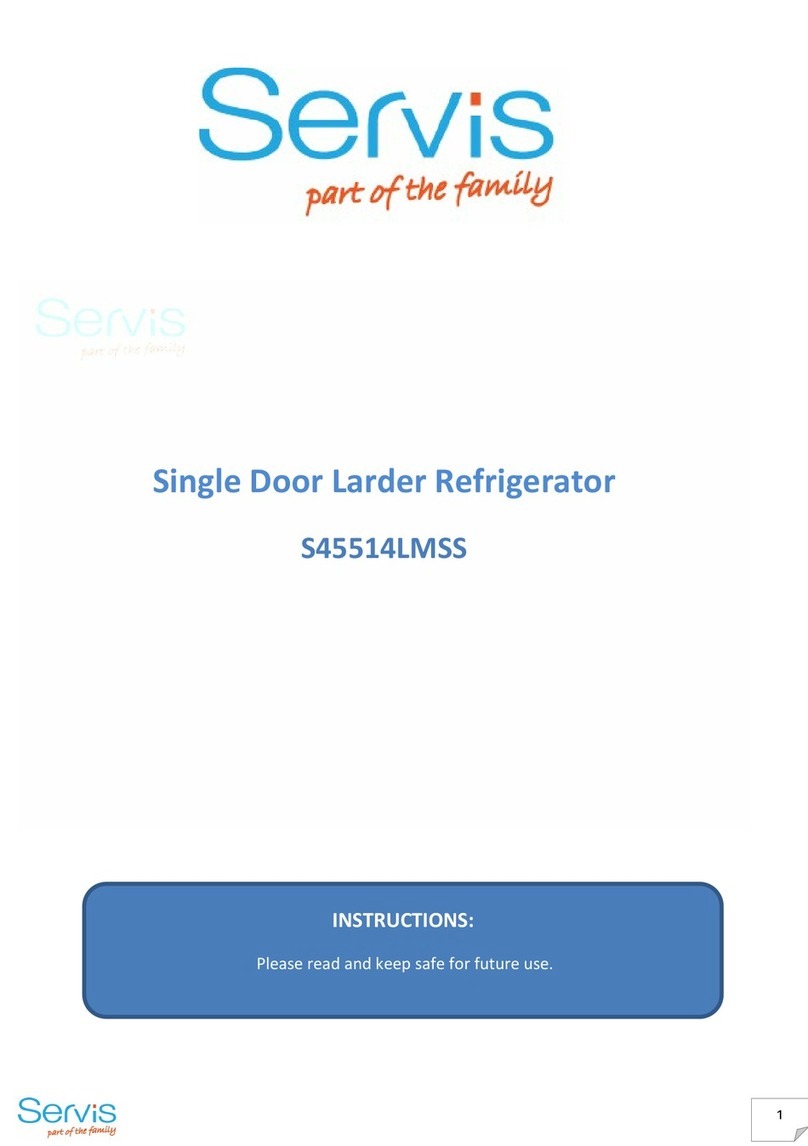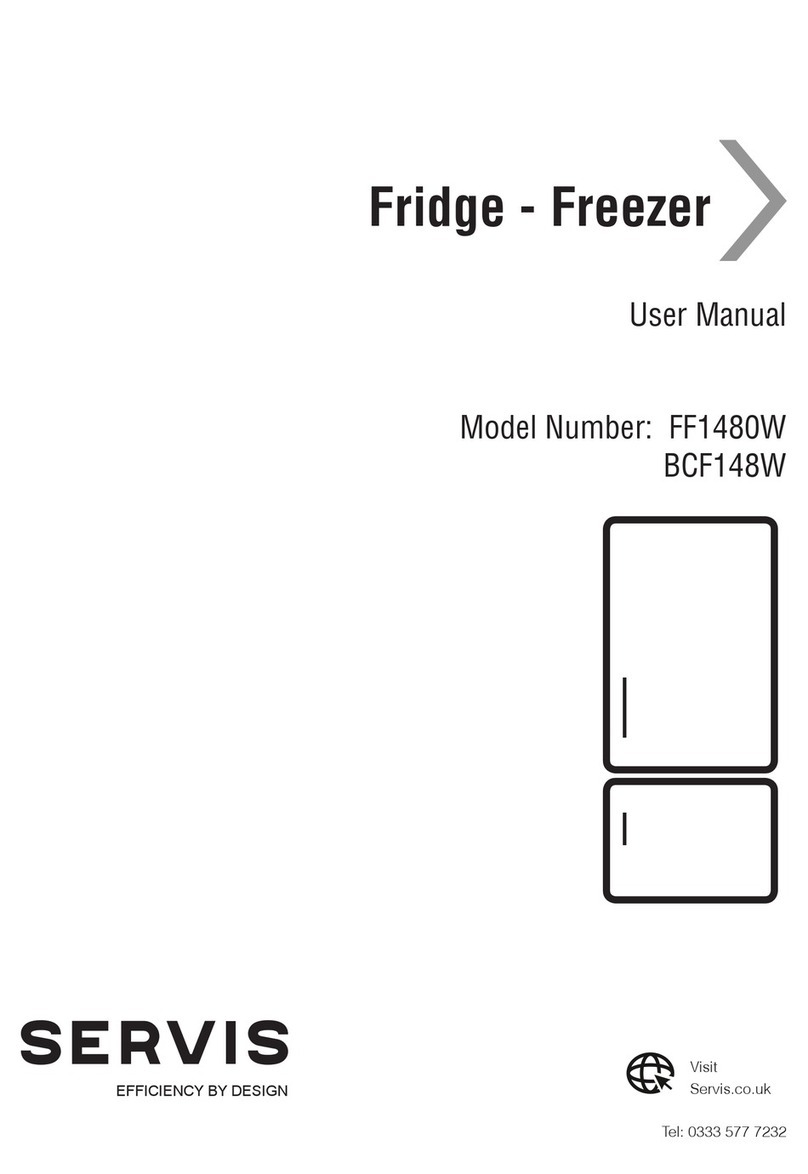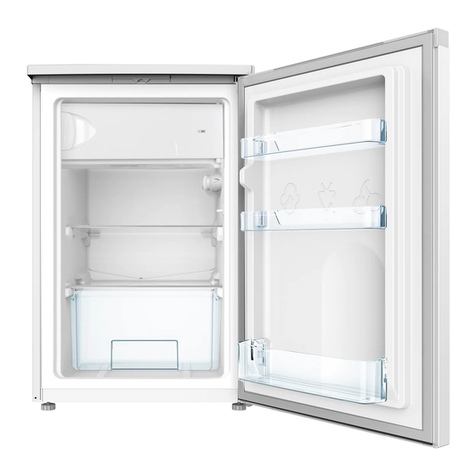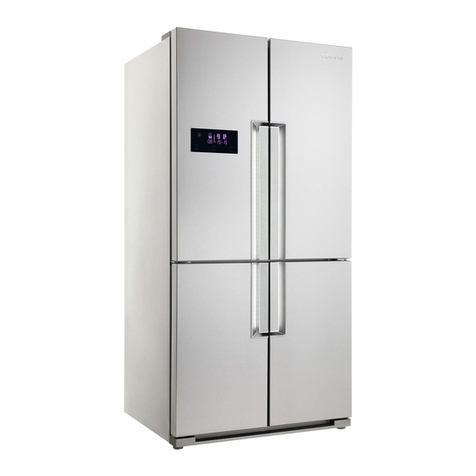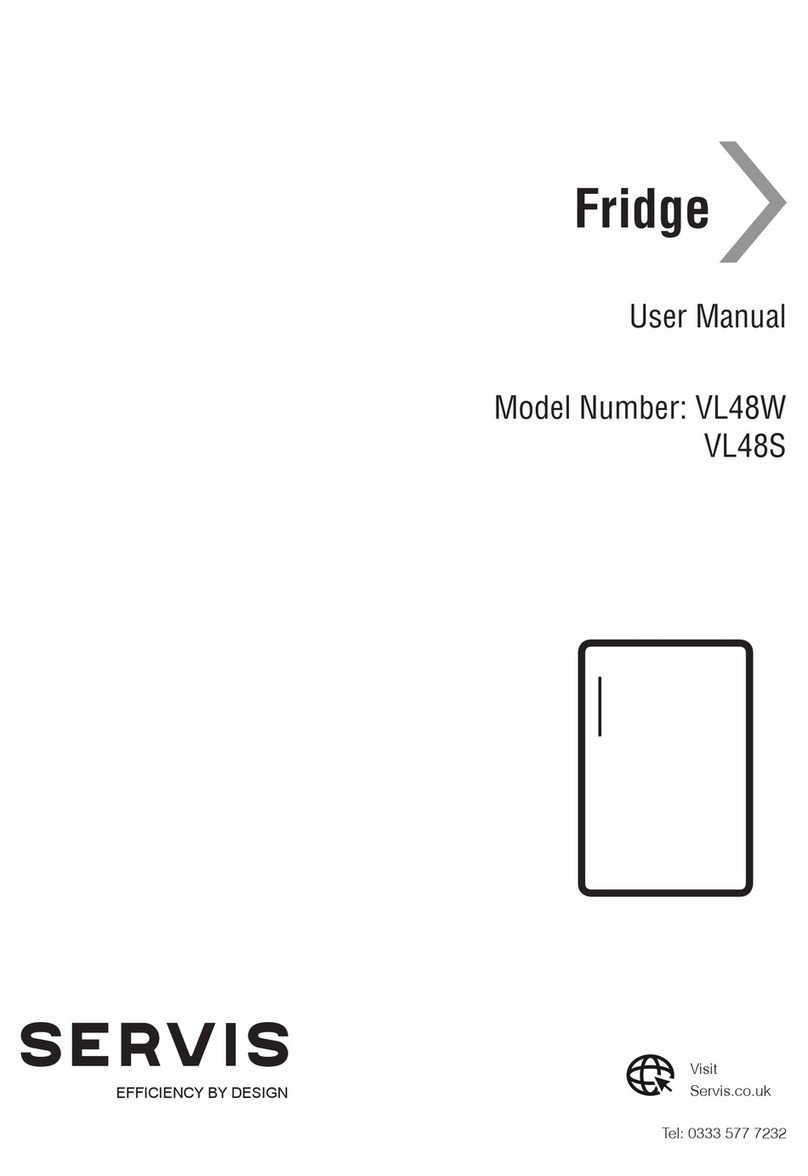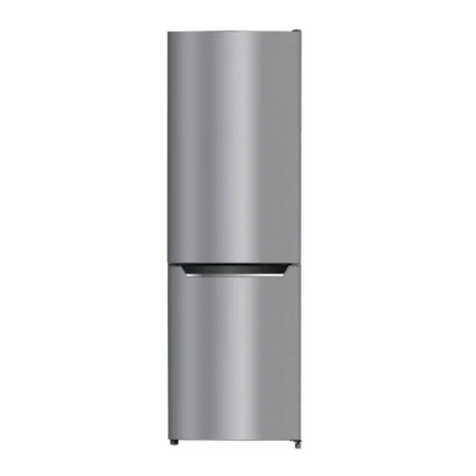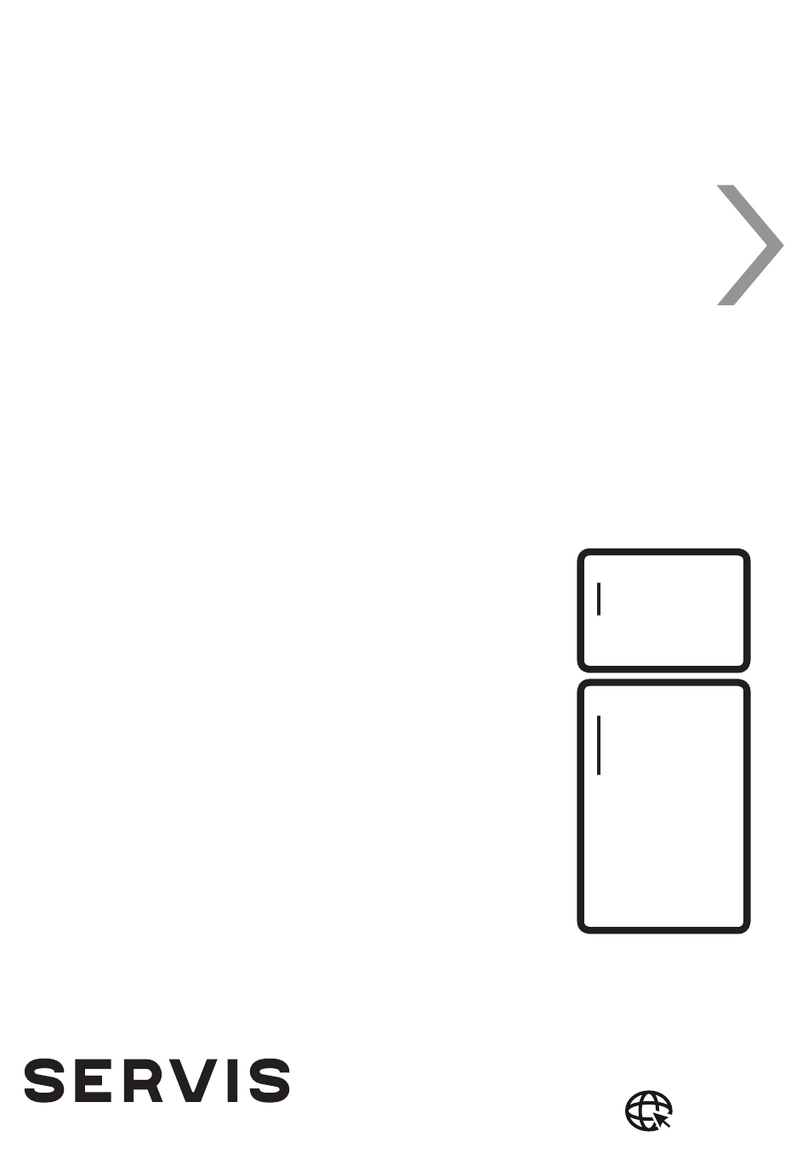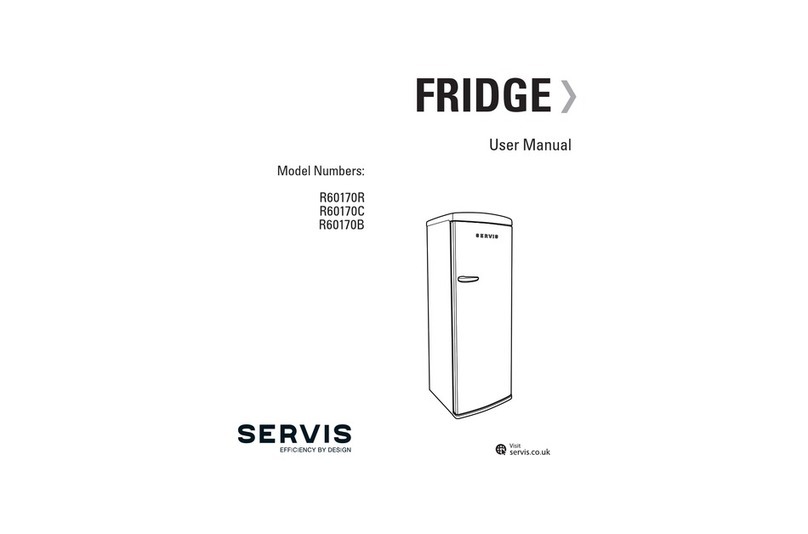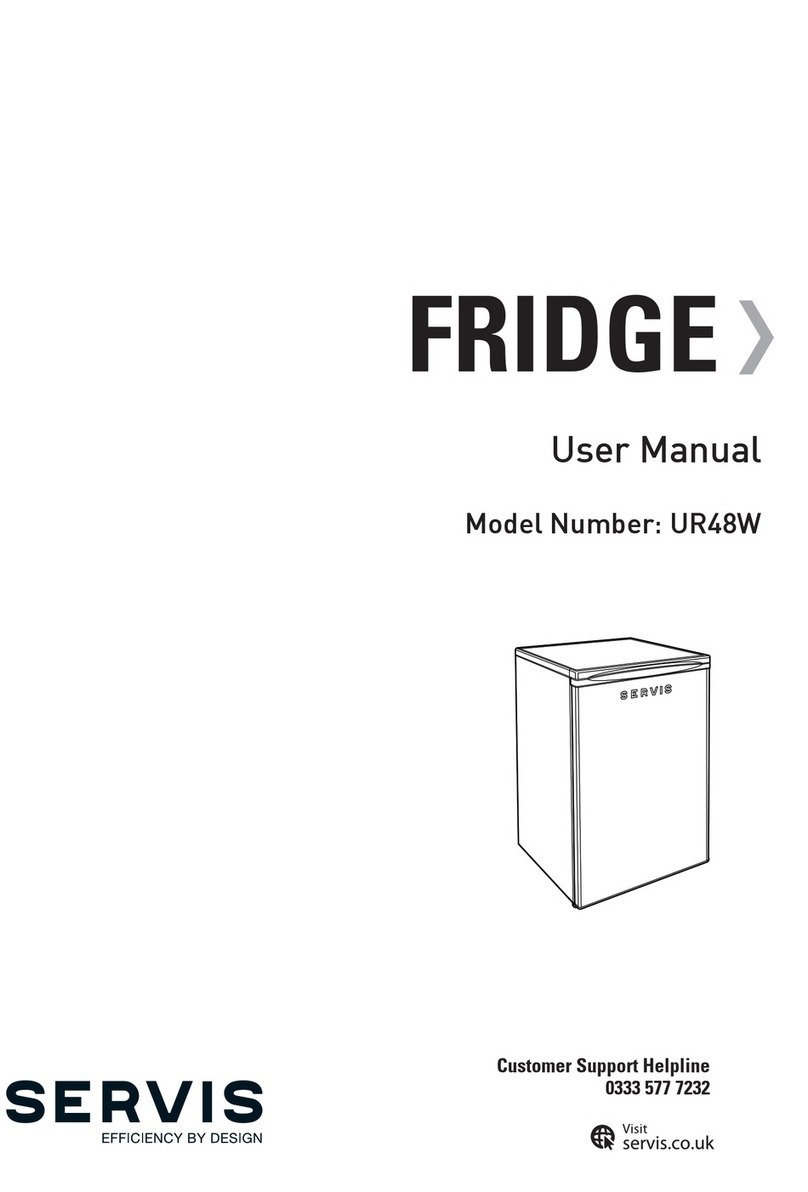
EN - 5 -
Installing and operating your fridge
Before starting to use your fridge, you should pay attention to the following points:
• Operating voltage for your fridge is 220-240 V at 50Hz.
• The plug must be accessible after installation.
• There can be an odour when you first switch on the appliance. It will disappear after
the appliance starts to cool.
• Before making the connection to the power supply, ensure that the voltage on the
nameplate corresponds to the voltage of electrical system in your home.
• Insert the plug into a socket with an efficient ground connection. If the socket has no
ground contact or the plug does not match, we suggest you to call an authorized
electrician for assistance.
• The appliance must be connected with a properly installed fused socket. Power
supply (AC) and voltage at the operating point must correspond with the details on
the name plate of the appliance (name plate is located on the inside left of the
appliance).
• We do not take responsibility for damages that occur due to ungrounded usage.
• Place your fridge in a place where it won't be exposed to direct sunlight.
• Your fridge should never be used outdoors or left under the rain.
• Your appliance should be at least 50 cm away from stoves, Gas ovens and heaters,
and should be at least 5 cm away from electrical ovens.
• When your fridge is placed next to a deep freezer, there should be at
least 2 cm between them to prevent humidity on the outer surface.
• Do not place heavy items on the appliance.
• Clean the appliance thoroughly, especially in the interior, before use
(See Cleaning and Maintenance).
• Installation procedure into the kitchen unit is given in the installation
manual. This product is intended to be used in proper kitchen units
only.
• The adjustable front legs should be adjusted to make sure your appliance is level
and stable. You can adjust the legs by turning them clockwise (or in the opposite
direction). This should be done before placing food in the fridge.
• Before using your fridge, wipe all parts back with warm water added with a tea
spoonful of sodium bicarbonate, and then rinse with clean water
and dry. Replace all parts after cleaning.
• Install the plastic distance guide (the part with black vanes at the
rear) by turning it 90° as shown in the figure to prevent the condenser
from touching the wall.
• The refrigerator should be placed against a wall with a free distance
not exceeding 75 mm.
